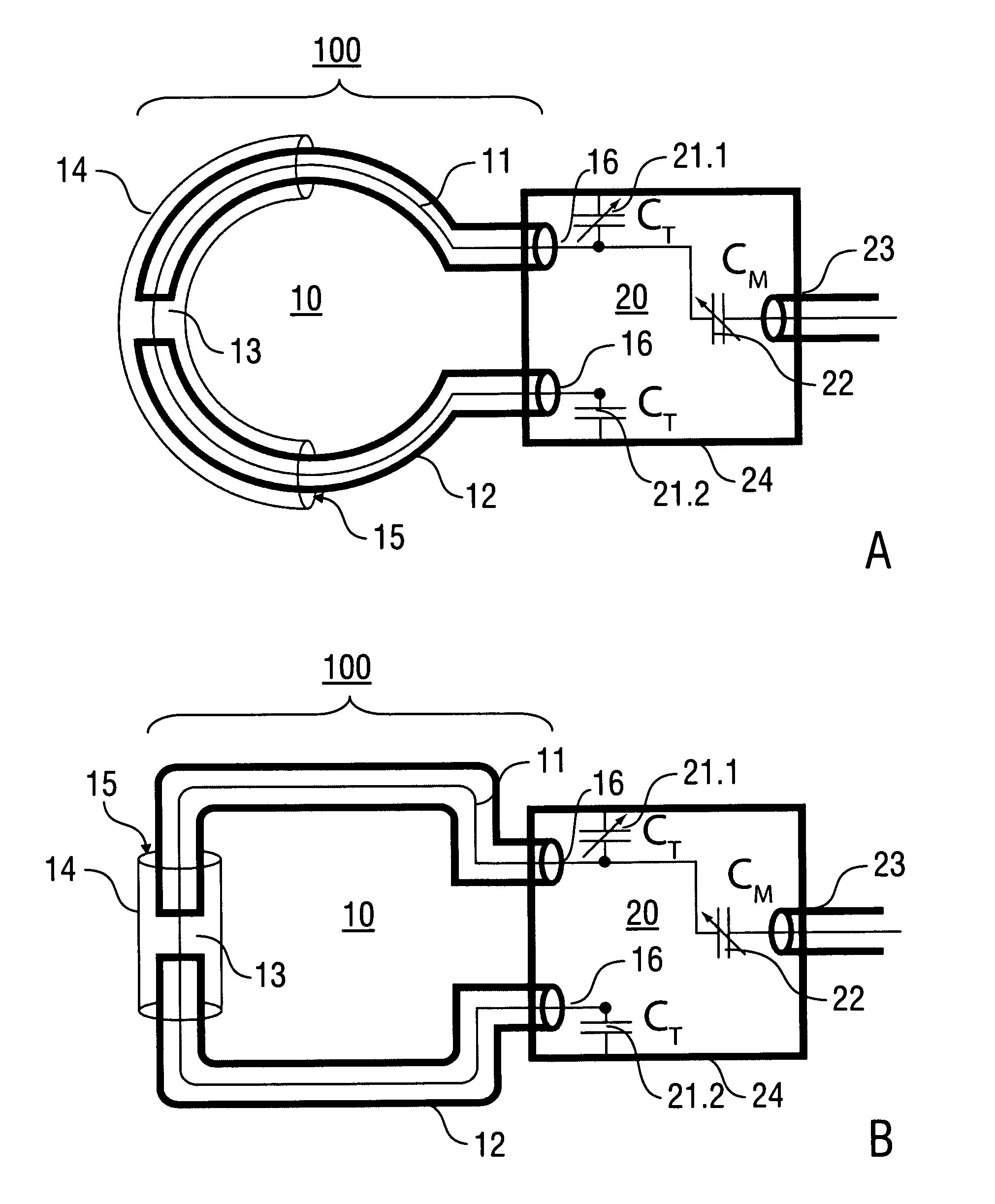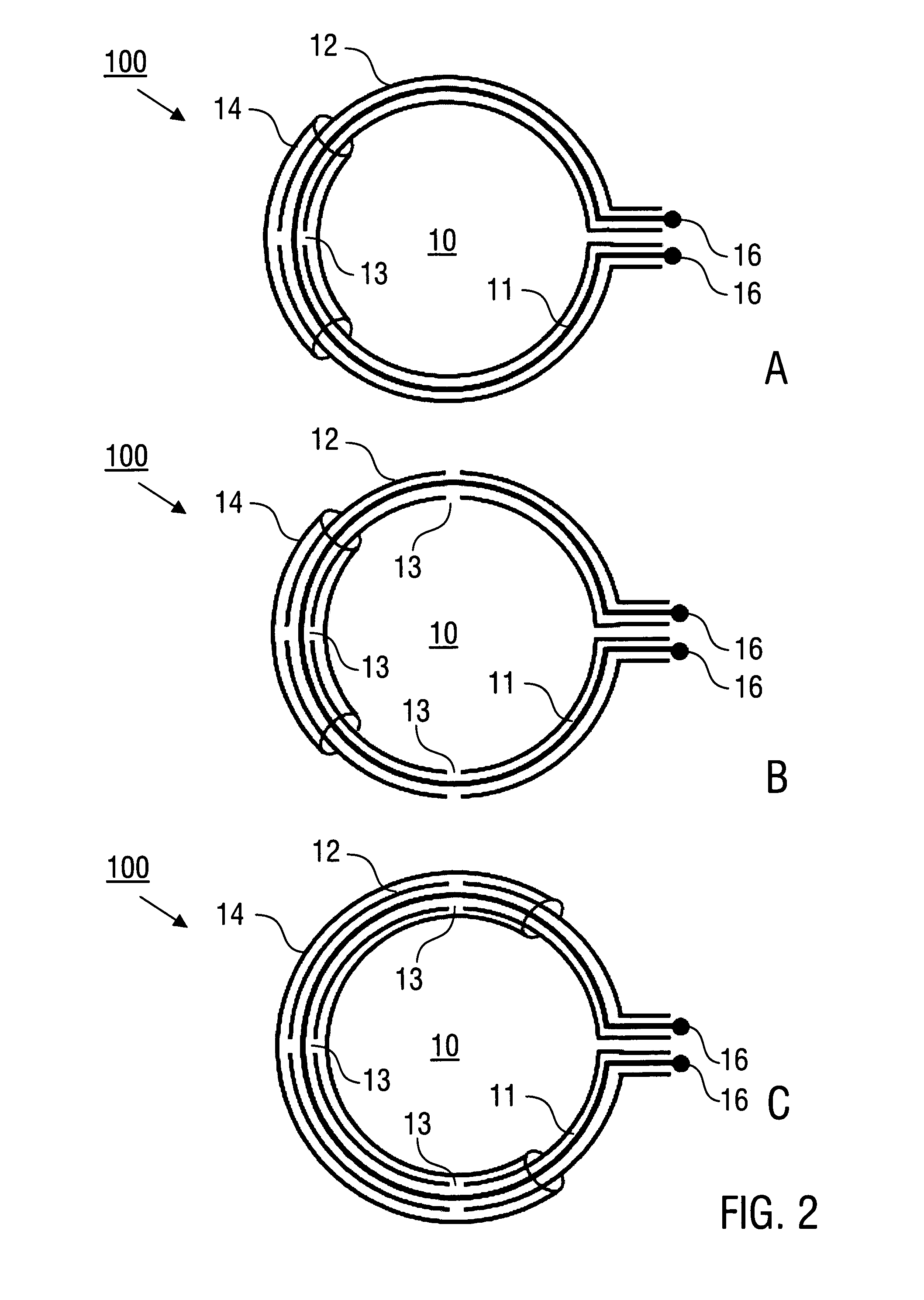Antenna and antenna arrangement for magnetic resonance applications
a technology of magnetic resonance and antenna, applied in the field of mri or mr spectroscopy, can solve the problems of inability to adjust the tuning behavior of the antenna at higher frequencies, the adverse effect of the hf /sub>field on the production and tuning of the antenna, and the inability to manufacture the antenna. the effect of facilitating the manufacture of the antenna and adjusting the secondary shielding conductor
- Summary
- Abstract
- Description
- Claims
- Application Information
AI Technical Summary
Benefits of technology
Problems solved by technology
Method used
Image
Examples
Embodiment Construction
[0070]Embodiments of the invention are described in the following with exemplary reference to antennas, whose conductor loop comprises at least one loop made of a coaxial waveguide with at least one gap and an additional secondary shielding conductor over the at least one gap. The implementation of the invention is not restricted to the illustrated examples, but can be accomplished in a corresponding manner with loop arrangements which comprise differently formed loops and / or other forms of waveguides.
[0071]Furthermore, the invention is described hereinafter with reference by way of example to antennas, which extend along a planar reference surface (reference plane). Correspondingly, the invention can be implemented with curved reference surfaces. Although the feed points of the antenna are illustrated at the ends of the conductor loop, the feed points can alternatively be provided in other sections of the waveguide of an antenna.
[0072]Finally, it should be noted that the capacitanc...
PUM
 Login to View More
Login to View More Abstract
Description
Claims
Application Information
 Login to View More
Login to View More - R&D
- Intellectual Property
- Life Sciences
- Materials
- Tech Scout
- Unparalleled Data Quality
- Higher Quality Content
- 60% Fewer Hallucinations
Browse by: Latest US Patents, China's latest patents, Technical Efficacy Thesaurus, Application Domain, Technology Topic, Popular Technical Reports.
© 2025 PatSnap. All rights reserved.Legal|Privacy policy|Modern Slavery Act Transparency Statement|Sitemap|About US| Contact US: help@patsnap.com



